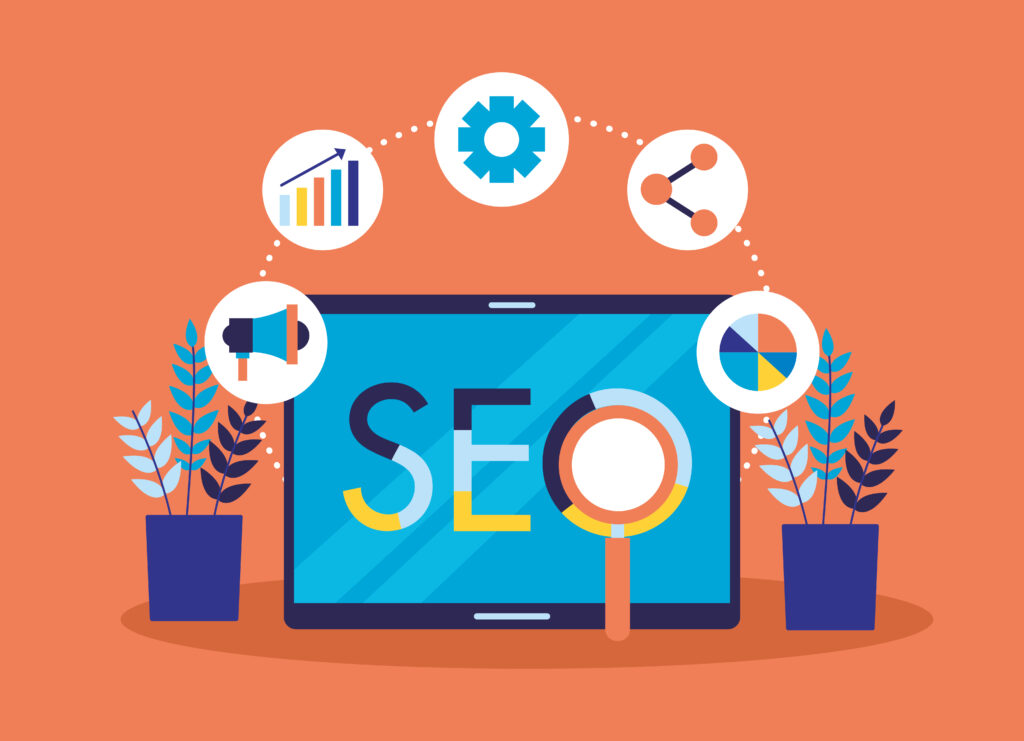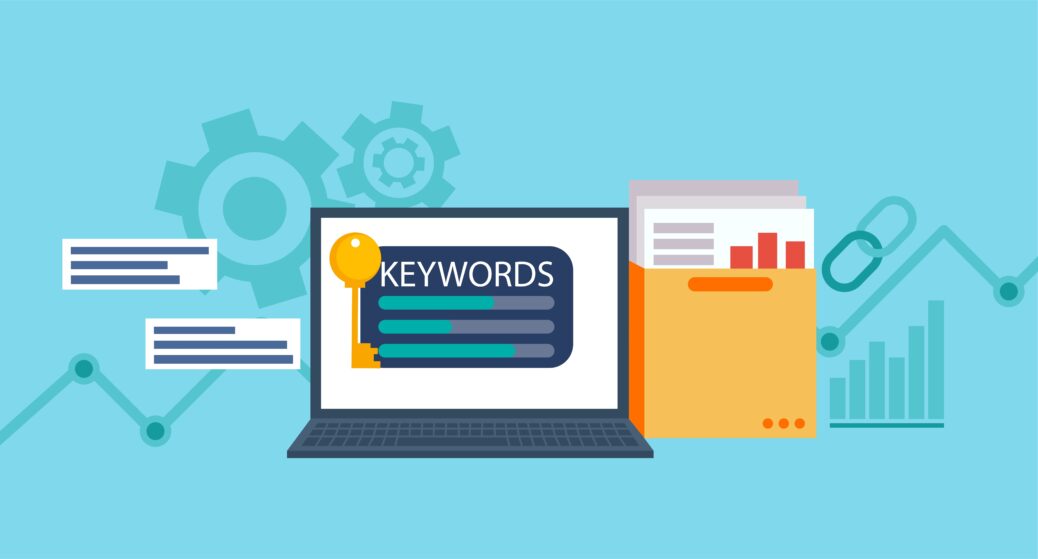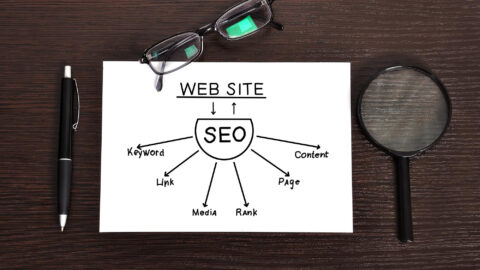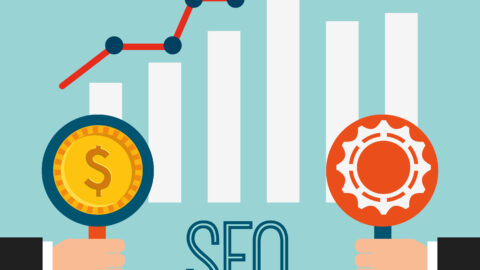The ascending popularity of search engine optimization (SEO) techniques in digital marketing has led to an increased focus on the intricacies of how these strategies work. In particular, understanding the fundamental principles of on-page SEO is crucial for businesses aiming to achieve better rankings and visibility online.
This article delves into a comprehensive analysis of essential on-page SEO components that can empower website owners with effective measures to optimize their content and enhance organic search performance. As the virtual landscape becomes increasingly competitive, having control over one’s site ranking can significantly contribute to achieving desired results.
By exploring various aspects such as keyword research, meta tags, header tags, image optimization, and overall user experience design, this article aims at providing readers with actionable insights into optimizing each element effectively. Additionally, it will emphasize the importance of incorporating high-quality content that caters to both users’ needs and search engine algorithms preferences.
Armed with this knowledge, organizations can establish a solid foundation for long-term success by consistently implementing best practices in their quest for higher rankings and improved traffic generation.
The Importance Of On-Page Seo
Diving into the vast ocean of digital marketing, one might encounter various species of strategies and techniques. However, amidst this complex ecosystem, on-page SEO remains a fundamental cornerstone for achieving better rankings in search engines.
This section aims to explore the critical importance of on-page SEO while debunking common misconceptions and myths that surround it.
On-page SEO refers to optimizing individual web pages by enhancing both content and HTML source code elements. This process ensures higher visibility within search engine results pages (SERPs) and ultimately drives organic traffic. Despite its significance, many individuals fall prey to on-page misconceptions that propagate misunderstanding about its value or purpose. For instance, some may claim keyword stuffing is an effective tactic when, in reality, it can result in penalties from search engines like Google. By shedding light on these SEO myths, businesses can develop more robust strategies based on accurate information.
The foundation of any successful on-page SEO strategy lies in conducting thorough keyword research. Identifying relevant keywords helps create valuable content tailored to target audiences’ needs while ensuring search engines comprehend the webpage’s focus. Proper implementation of selected keywords throughout meta tags, headings, URLs and images solidifies a page’s relevance to specific queries raised by users seeking answers online.
As we continue our journey deeper into this topic, we will delve into the intricacies involved in conducting comprehensive keyword research as an essential component for impactful on-page optimization efforts.
Conducting Keyword Research
Effective keyword research forms the foundation of any successful on-page SEO strategy. By identifying the most relevant and valuable keywords, a website can strategically optimize its content to rank higher in search engine results pages (SERPs). Utilizing comprehensive research tools is essential for uncovering popular search queries that align with a site’s goals and target audience.
- Identify core topics and seed keywords
- Leverage various research tools such as Google Keyword Planner, SEMrush, or Ahrefs
- Analyze keyword difficulty and competition levels
- Consider long-tail keywords for more specific searches
- Monitor trends and changes in keyword popularity over time
Keyword placement plays a vital role in optimizing content for better rankings. Positioning primary keywords within critical areas such as title tags, headings, meta descriptions, URLs, and throughout the body text signals their importance to search engines. Additionally, incorporating variations of those terms can strengthen the relevance of content while avoiding excessive repetition.
Strategic use of keyword data can inform decisions about crafting compelling headlines, developing engaging content structures, targeting user intent accurately, and providing useful information to users. As a result, well-researched keywords not only improve organic visibility but also enhance user experience by addressing visitors’ needs effectively.
This synergy between search optimization and user satisfaction ultimately contributes to sustainable growth in traffic volume and conversion rates. With thorough keyword research as an integral component of on-page SEO efforts, it becomes crucial to pay attention to other aspects like optimizing meta tags and header tags which will be explored further in the next section.
Optimizing Meta Tags And Header Tags
Meta tags and header tags are essential elements of on-page SEO. Writing compelling title and description tags that accurately reflect the page content can help to improve website rankings.
Structuring heading tags properly can help to make web pages easier to read and understand for users and search engine bots.
Internal linking strategies can help to improve the crawlability of web pages and make it easier for search engines to discover content. Using proper anchor text for internal links can also help to improve the relevancy of a web page. It is important to ensure that all internal links are working properly and lead to the intended destination.
Finally, optimizing meta tags and header tags can help to increase the visibility of web pages in search engine results pages.
Writing Title & Description Tags
Undoubtedly, the effectiveness of title tags cannot be overstated as they play a pivotal role in attracting potential visitors to click on a website’s link. As one of the first pieces of information presented by search engines, crafting an engaging and informative title tag is essential for maximizing organic traffic. Furthermore, incorporating critical keywords into these tags can significantly improve visibility and ranking within search engine results pages.
In addition to optimizing title tags, the impact of well-written description tags should not be underestimated. These snippets provide users with a brief overview of what content lies within each webpage, allowing them to make informed decisions about which links to follow. By creating compelling descriptions that accurately represent the contents while simultaneously integrating relevant keywords, it becomes possible to enhance both user experience and search engine rankings.
To truly capitalize on the power of meta and header tags, it is crucial to strike a balance between providing useful information for users while maintaining keyword density for optimal SEO performance.
Crafting meaningful title and description tags will give potential visitors greater control over their browsing experience while ensuring higher levels of engagement with webpages across the platform. Thus, mastering this fundamental aspect of on-page optimization paves the way for consistent growth in organic traffic and improved overall online presence.
Structuring Heading Tags
Having established the significance of title and description tags in enhancing user experience and search engine rankings, it is essential to also consider the role of heading tags when optimizing web content.
A well-structured hierarchy of headings allows users to quickly navigate through a webpage, enabling them to find relevant information efficiently. Heading Hierarchy plays a critical role in organizing content while simultaneously providing an opportunity for incorporating keywords that improve SEO performance further.
When structuring heading tags, maintaining Tag Consistency throughout the website ensures coherence and accessibility for both human visitors and search engines alike. By using appropriate levels of header tags (H1, H2, H3, etc.), one can establish a clear structure that highlights primary topics and subtopics within each page’s content.
This organization not only promotes easier navigation but also signals the importance of specific sections to search engines – ultimately contributing to improved organic traffic.
In conclusion, mastering the art of meta tag optimization involves striking a balance between informative title and description tags as well as structuring heading tags effectively. Prioritizing these elements grants users greater control over their browsing experience by presenting organized and engaging content tailored to meet their needs.
As this optimization leads to higher engagement rates and enhanced online presence overall, businesses must prioritize these aspects as integral components of successful on-page SEO strategies.
Internal Linking Strategies
In addition to the optimization of meta tags and header tags, an equally significant element in enhancing user experience and search engine rankings is the implementation of effective internal linking strategies.
By strategically interconnecting relevant pages within a website, one can facilitate easier navigation for users while also providing opportunities for further exploration of related content. This ultimately satisfies the audience’s desire for control as they are empowered to dictate their own journey through the site.
Internal linking benefits not only contribute to improved user engagement but also strengthen a website’s SEO performance by establishing a logical hierarchy and spreading link equity across its various pages.
To achieve these goals, it is essential to employ appropriate anchor text usage that accurately reflects the linked page’s content while incorporating relevant keywords. This practice enables both search engines and users to discern the significance of each link, leading to greater relevance and authority in overall site structure.
Incorporating well-thought-out internal linking strategies into on-page SEO efforts ensures that web content remains organized, accessible, and engaging – all crucial factors in driving higher engagement rates and securing better organic traffic results.
Through careful planning and execution of such practices alongside diligent attention to title, description, and heading tag optimization, businesses can effectively improve their online presence while catering to their audience’s innate desire for control over their browsing experiences.
Enhancing Content Quality And Relevance
A flourishing garden, brimming with vibrant flowers and lush vegetation, attracts a myriad of pollinators. The secret to its allure lies in the careful nurturing of each plant, ensuring optimal growth and vitality.
Similarly, enhancing content quality and relevance is pivotal for drawing an audience to one’s website.
One essential aspect that requires attention is content structure. A well-organized piece disseminates information more effectively, catering to readers’ subconscious desire for control. Employing headings, subheadings, bullet points, or numbered lists ensures easy navigation through the text while retaining visitor focus on key elements.
Relevant visuals further enhance this experience by providing contextually appropriate graphics – striking images accentuate written material and make it more compelling.
To maintain reader engagement and boost search engine rankings alike, it is vital to combine both appealing content structure and relevant visuals within a webpage’s design. This approach increases user satisfaction as well as dwell time on-site – factors that contribute significantly towards improving domain authority over time.
With these foundational principles established, image optimization techniques can be explored further in order to elevate the efficacy of visual content used throughout websites even higher.
Image Optimization Techniques
In the pursuit of enhancing content quality and relevance, another pivotal aspect to consider is image optimization. This not only contributes to better search rankings but also ensures that website visitors have a seamless experience while interacting with the site’s visual elements.
Integrating effective image optimization techniques allows for quicker load times, improved accessibility for users with disabilities, and an overall enhanced user experience. One crucial component of image optimization is compression. By utilizing image compression tools and formats like WebP or JPEG XR, file sizes can be significantly reduced without compromising on their visual quality.
Smaller file sizes lead to faster page loading times which contribute positively to SEO performance as well as keeping impatient users engaged. Another important strategy in optimizing images is alt text optimization. Alt texts describe the contents of an image, providing valuable context for both search engines indexing the site and screen readers used by visually impaired individuals.
Utilizing relevant keywords in these descriptions helps improve SEO performance while maintaining accessibility standards. When applying these strategies—image compression and alt text optimization—it becomes clear how essential they are for boosting a website’s visibility and catering to various user needs.
A well-rounded approach to optimizing images benefits not just search engine crawlers but also diverse audiences seeking information online. Keeping this in mind, it would be prudent to further explore additional methods such as improving user experience design so as to create an even more compelling online presence.
Improving User Experience Design
It is an undeniable fact that the digital world we live in today demands nothing short of excellence when it comes to user experience. A website’s success hinges on its ability to captivate and engage users, compelling them to stay longer and explore deeper. In this age of cutthroat competition, websites must prioritize improving their user-centric design and accessibility improvements, lest they risk fading into obscurity.
User-centric design: This approach places the needs, preferences, and expectations of users at the forefront of every decision-making process. By focusing on creating a seamless navigation structure along with visually captivating elements that align with user preferences, websites can foster enhanced engagement levels.
Accessibility improvements: Ensuring that a site caters to people with different abilities not only broadens its reach but also demonstrates a commitment towards inclusivity. Adopting practices such as providing alternative text for images, ensuring keyboard navigability, and offering options for font size adjustments enhance overall usability.
A well-designed user experience has far-reaching consequences beyond mere aesthetics; it translates into higher satisfaction rates among visitors, increased trust in your brand, and ultimately better search engine rankings due to more prolonged visits by engaged users.
As businesses continue striving towards perfecting their online presence through compelling content strategies aimed at dominating SERPs (search engine results pages), incorporating these vital aspects of web development cannot be ignored or underestimated. With this foundation solidly established, one can now delve deeper into monitoring and adjusting strategies for continued success without losing sight of what truly matters – exceptional user experiences tailored to meet diverse needs seamlessly.
Monitoring And Adjusting Strategies For Continued Success
Effective on-page SEO necessitates a continuous process of monitoring and adjusting strategies to ensure optimal rankings. One critical aspect of this ongoing optimization is strategy adaptation, which involves identifying areas where the current approach may not be yielding desired results and making necessary modifications.
By staying abreast of industry trends, algorithm updates and user preferences, businesses can adapt their strategies accordingly, ensuring long-term success in search engine visibility. Success tracking plays an integral role in evaluating the effectiveness of on-page SEO efforts by providing valuable insights into performance metrics such as organic traffic growth, keyword ranking improvements and engagement levels.
Utilizing these data points allows decision-makers to identify strengths and weaknesses within their current strategy while also recognizing new opportunities for enhancement. Moreover, consistent monitoring enables quick detection of any potential issues or emerging trends that could impact search engine rankings – allowing businesses to proactively address them before they become significant obstacles to sustained progress.
As the digital landscape continues to evolve at a rapid pace, taking a proactive stance towards on-page SEO is crucial for maintaining a competitive edge in today’s highly saturated online environment. Through regular evaluation and adjustment of strategies based on relevant success indicators, businesses can effectively optimize their website content for improved search engine visibility and ultimately achieve better rankings.
This commitment to constant improvement will pave the way for continued success in attracting more targeted site visitors who are likely to convert into loyal customers over time.

Frequently Asked Questions
How Does The Mobile-Friendliness Of My Website Impact My On-Page Seo And Overall Search Rankings?
The mobile-friendliness of a website significantly impacts its on-page SEO and overall search rankings, as search engines prioritize sites that provide an optimal user experience across various devices.
Incorporating mobile responsive design ensures seamless viewing and navigation for users, regardless of the device utilized, thereby enhancing user experience optimization.
Consequently, websites with a mobile-responsive design are more likely to rank higher in search results due to their improved usability and accessibility.
Thus, prioritizing mobile-friendliness not only caters to the ever-growing number of smartphone users but also contributes to better visibility in organic search results, ultimately empowering businesses to reach a broader audience and maintain control over their online presence.
Can On-Page Seo Alone Guarantee Top Search Rankings, Or Are There Other Factors That Contribute To My Website’s Visibility On Search Engines?
While on-page SEO, which encompasses keyword optimization and user experience, plays a vital role in enhancing website visibility on search engines, it alone cannot guarantee top rankings.
Various other factors contribute to a site’s overall standing in search results; these include off-page SEO elements such as backlinks from authoritative sources, social media presence, and local citations, as well as technical aspects like page load speed and mobile-friendliness.
In order to achieve optimal search engine rankings and increased online exposure for a website, one must consider the comprehensive interplay of all aforementioned components within an integrated digital marketing strategy.
How Do Internal And External Linking Strategies Play A Role In My Website’s On-Page Seo, And What Are Some Best Practices For Implementing Them Effectively?
Coincidentally, mastering the art of internal and external linking strategies is crucial in enhancing on-page SEO for any website.
Link building strategies involve creating a network of interconnected content within a site (internal links) as well as developing connections with other reputable websites (external links).
These tactics not only improve user experience by providing easy access to relevant information but also signal to search engines that a website contains valuable data.
Anchor text optimization plays an essential role in this process, ensuring that the clickable words used in hyperlinks are descriptive and contextually appropriate while avoiding overuse of exact-match keywords or excessively generic terms.
By employing these best practices in internal and external link development, webmasters can effectively bolster their on-page SEO efforts, satisfying both users and search algorithms alike.
How Often Should I Update Or Refresh My Website’s Content To Maintain Or Improve On-Page Seo And Search Rankings?
The frequency with which website content should be updated or refreshed to maintain or improve on-page SEO and search rankings is contingent upon several factors, such as industry trends, audience preferences, and competition.
While there is no fixed formula for determining the ideal update frequency, it is crucial that organizations consistently monitor their existing content’s relevance, engagement metrics, and ranking performance in order to identify opportunities for optimization.
Some vital aspects of this process include evaluating content length and keyword density within the text; longer-form content tends to perform better in terms of user engagement and rankings, while maintaining an appropriate balance between primary keywords and semantically related phrases can enhance a page’s topical authority without compromising readability.
Overall, by regularly analyzing these elements, businesses can effectively ensure that their website remains aligned with evolving search engine algorithms, ultimately facilitating greater visibility and improved organic traffic growth.
Are There Any Tools Or Resources Available To Help Me Better Understand And Implement On-Page Seo Techniques For My Website?
A recent study revealed that 75% of users never scroll past the first page of search results, emphasizing the importance of effective on-page SEO techniques for better website rankings.
To assist with this endeavor, numerous tools and resources are available for implementing strategies such as keyword optimization and image optimization. These instruments aid in identifying relevant keywords, optimizing content structure, and ensuring images adhere to best practices like proper file formats, descriptive filenames, and informative alt tags.
By utilizing these valuable resources, webmasters can create engaging content designed to satisfy both search engines’ algorithms and audiences seeking a sense of control over their online experience.
Conclusion
In conclusion, one might assume that on-page SEO is the ultimate solution for achieving top search rankings. However, it would be rather naive to think that merely optimizing a website’s content and structure can guarantee its visibility in search engines.
On-page SEO is undoubtedly essential but should not be considered as an isolated factor; instead, it must be integrated with other digital marketing strategies such as off-page SEO, social media engagement, and paid advertising.
Ironically, while the importance of on-page SEO cannot be overstated, neither can it alone ensure success in terms of search engine rankings. It remains crucial for businesses to utilize various tools and resources available to master the art of on-page optimization techniques while also exploring complementary strategies for enhancing their online presence.
Ultimately, striking this delicate balance will lead to better rankings and greater overall visibility in today’s highly competitive digital landscape.














